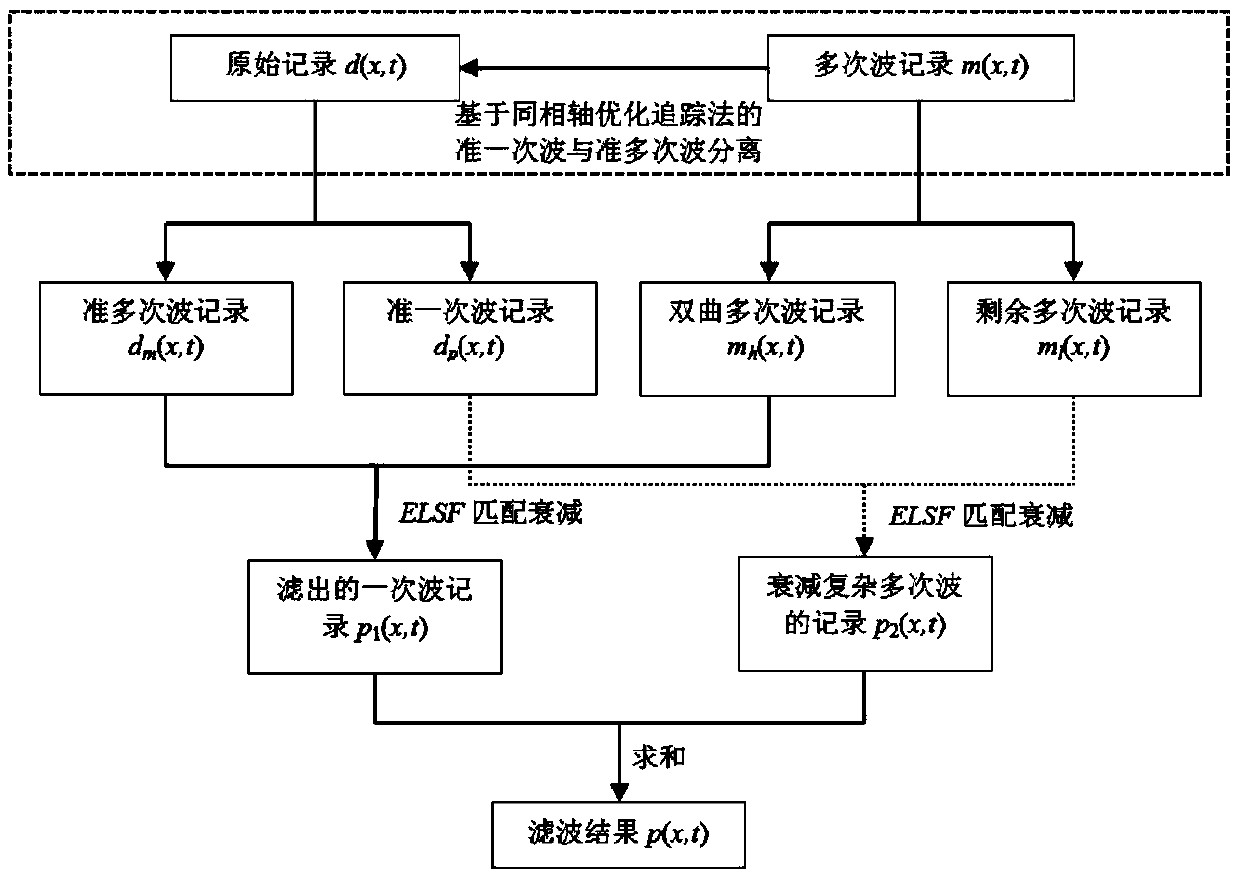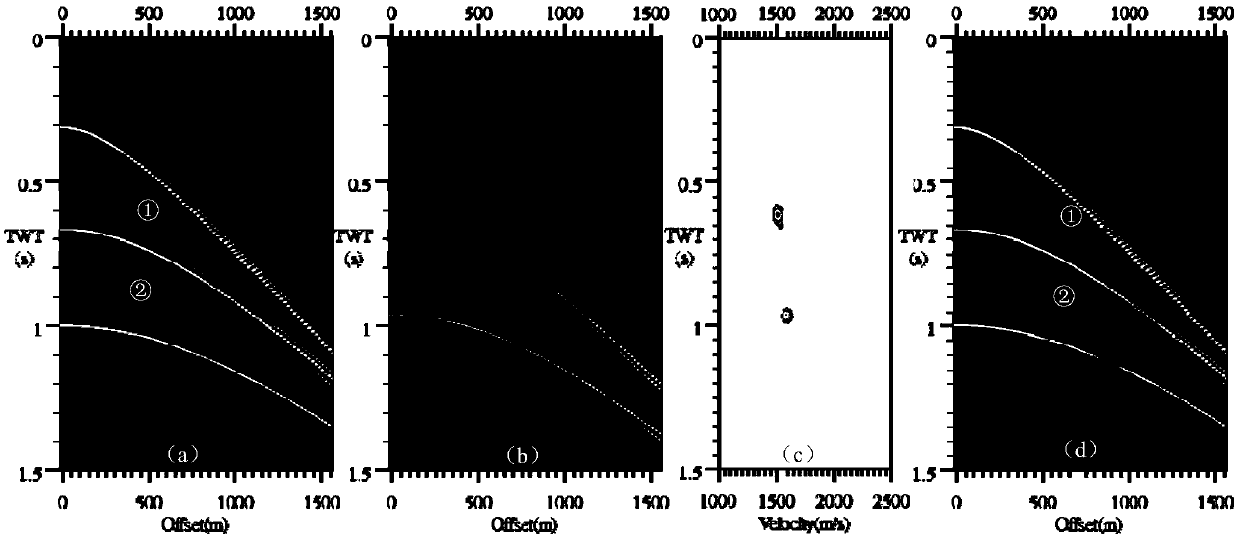Multiple-wave combined self-adaptive attenuation method
A multiple wave and self-adaptive technology, which is applied to measurement devices, instruments, scientific instruments, etc., can solve the problems of primary wave damage, easily damaged effective wave information, and poor non-hyperbolic multiple wave rejection. damage reduction effect
- Summary
- Abstract
- Description
- Claims
- Application Information
AI Technical Summary
Problems solved by technology
Method used
Image
Examples
Embodiment 1
[0040] A kind of multiple wave combined self-adaptive attenuation method, the medium model of specific embodiment comprises horizontal layered medium model and Pluto1.5 model, wherein the speed of horizontal layered model is as figure 1 shown. This embodiment takes the horizontal layered model as an example to describe in detail the implementation process of the adaptive attenuation method based on multiple wave combination (the flow chart is as follows figure 2 shown), the specific process is as follows:
[0041] 1) Taking the Lake wavelet with a main frequency of 35Hz as the seismic source, a set of seismic records containing multiple waves is generated by using the finite difference method simulation method of the acoustic wave equation. The seismic record has a total of 500 shots, each shot contains 160 traces, the shot spacing and the trace spacing are both 10 meters, and the minimum offset is 0 (the 500th CMP record corresponding to the shot set record is as follows ...
PUM
 Login to View More
Login to View More Abstract
Description
Claims
Application Information
 Login to View More
Login to View More - R&D
- Intellectual Property
- Life Sciences
- Materials
- Tech Scout
- Unparalleled Data Quality
- Higher Quality Content
- 60% Fewer Hallucinations
Browse by: Latest US Patents, China's latest patents, Technical Efficacy Thesaurus, Application Domain, Technology Topic, Popular Technical Reports.
© 2025 PatSnap. All rights reserved.Legal|Privacy policy|Modern Slavery Act Transparency Statement|Sitemap|About US| Contact US: help@patsnap.com



